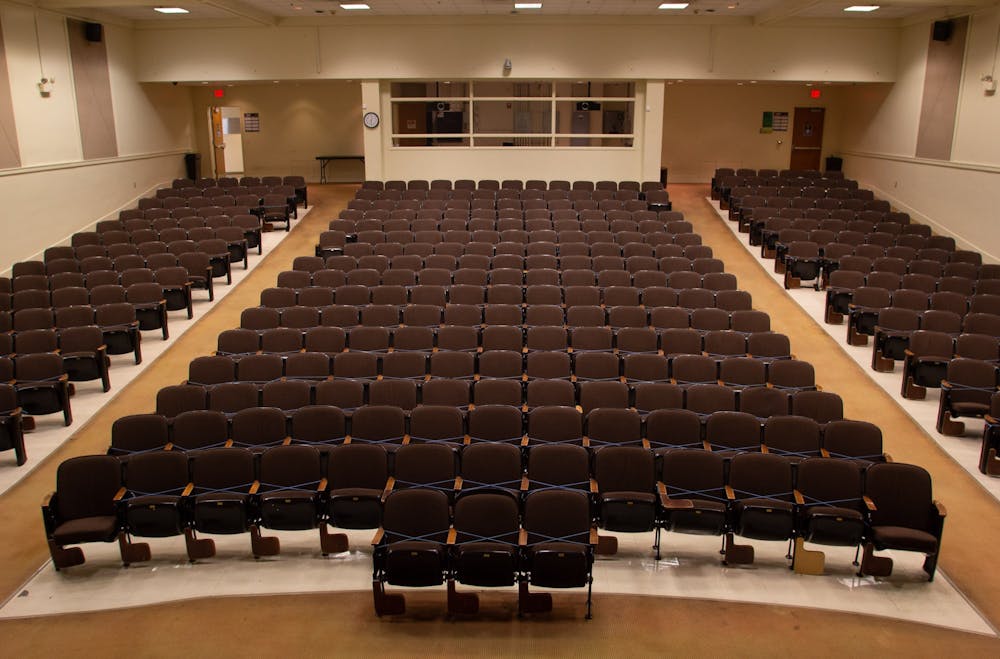“The idea is that the faculty member stays behind the podium or that line that crosses the room from the back of the podium so that they can move around in that backspace but not in front of the space,” Wernoski said.
The University will also identify two types of study spaces — quiet areas and learning areas — in addition to the traditional in-person spaces from the fall semester, Wernoski said. Quiet areas will be for remote learners or students who need a quiet environment, and learning areas will be for small groups of students to work together, have conversation and maintain physical distancing.
“When we looked at 6-foot physical distancing, we lost about half of our general-purpose classrooms to become 10 seating or less,” said Wernoski. “So, we’re using those spaces across campus for these additional study spaces.”
How faculty are adapting
Andy Bechtel, associate professor in the Hussman School of Journalism and Media, said he has chosen to teach both of his journalism classes remotely for spring semester due to their workshop class style. He said he tried in-person courses in the first part of the fall, and it was strange.
“In the old days, and I hope we can go back to those days, it's easy to huddle around a table and I can, as a professor, circulate around the room and check on people and see how you're doing,” Bechtel said. “I do think that's better overall. But also, right now it's not safe to do it that way.”
The University is also allotting some classroom spaces for faculty who prefer to teach remote in a classroom rather than their campus or home office.
Lindsay King, a teaching associate professor in the Hussman School, is teaching two intro-level courses and one higher-level course for the spring semester in person.
“My classes for the spring are close together and it’s in the same room, so I’m not going to have to go to as many rooms in Hussman,” she said. “So, I feel much better about in-person in the spring than I did in the fall.”
She said although the classes can’t be as hands on, it will be good to have the routine of coming to class even if it's just a lecture.
Moving around campus
Wernoski said the University is working through the logistics for a similar program to the Carolina Together Ambassadors program — where staffers helped students, faculty and staff navigate campus and give information on mask distribution sites.
To get the day's news and headlines in your inbox each morning, sign up for our email newsletters.
He said the University is waiting to determine how many in-person classes will be taught, and their location, before starting a similar program.
Wernoski said buildings will have directional signage to move traffic one-way if possible, although some building layouts don’t allow for that. He said that when.unc.edu — a mobile website part of Carolina Together — can be used to direct students to and through buildings based on their specific classrooms.
The Carolina Together map also contains information about indoor and outdoor spaces as well as mask distribution.
Wernoski said the classroom operations team is consulting with other advisory committees across campus such as the Campus & Community Advisory Committee to socialize ideas and receive maximum feedback for what is the best environment for faculty, staff and students.
“Going into it, I think we feel really confident and good about the work that we did in the fall that builds that color for us to build on for the spring what we saw being successful,” Wernoski said.
university@dailytarheel.com



